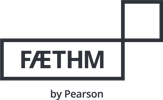By Stephen Farrell, Vice President - Americas "Future of Work, reskilling, upskilling, hybrid...
Strategic workforce planning, explained
In this article, we offer a comprehensive overview of strategic workforce planning. We discuss the current and future state of the global workforce, what strategic workforce planning is and why it's important for enterprises, key deliverables from a successful process, as well as workflow planning tools and techniques. Finally, we'll show you how Faethm's technology makes this process easy for enterprises to adopt and implement.
The current and future state of the global workforce
The current and future state of the global workforce will be characterized by a number of key trends. These include:
-
An increasingly diverse workforce, which is growing in size and complexity
-
A more educated workforce, with higher education levels than ever before
-
A more mobile and highly skilled workforce that can easily travel across borders
-
A more productive workforce than ever before, thanks to technological advances across all industries
-
An independent and engaged global population
What is strategic workforce planning?
Strategic workforce planning is the process of determining the workforce you need to meet the demands of your business. It's a long-term process and it's about anticipating the future needs of your business. It also helps prepare for those needs by working with human resource professionals to create plans that allow you to adjust as needed when situations change, so that you're always prepared for anything.
Key workforce planning deliverables
-
Workforce Plan: The workforce plan is a high-level document that includes an overview of your organization’s current and desired employee profile, a review of your business strategy and goals, and a summary of the initiatives you will take to achieve them.
-
Workforce Plan Dashboard: A dashboard is a visual representation of key performance indicators (KPIs) for your workforce plan. Typically, dashboards are displayed on large monitors near the office’s entryway so employees can see them as they come into work each morning.
-
Workforce Plan Report: A report provides detailed information about specific aspects of your workforce planning efforts. Reports typically address topics such as turnover rates or onboarding processes. In some instances they may be presented at meetings to highlight progress toward meeting goals or objectives set forth in the strategic plan itself.
Why workforce planning?
It is important to plan for the future. It's also important to plan for the future of the workforce. It's also important to plan for the future of your company, and it's even more important to plan for the future of your customers and business.
Workforce planning is such an integral part of effective business strategy - its imperative you're thinking about how you can get started with it, and what kinds of benefits it can bring you as an organization in terms of productivity, employee satisfaction, customer satisfaction and ultimately profits.
The strategic workforce planning process
-
Define the business case.
-
Conduct an analysis of the organization's human capital needs and priorities.
-
Develop a strategic workforce plan that aligns with organization goals, including high-level objectives for staff turnover and attrition, along with data on how each department is currently staffed and what gaps remain.
-
Communicate the strategic workforce plan to key stakeholders within the organization, as well as relevant external parties such as government agencies or unions, if applicable.
Workforce planning tools and techniques
There are many tools and techniques for workforce planning. These include:
Workforce assessment - An assessment of your current or future workforce is an important first step in any workforce planning process. The goal of this type of assessment is to determine the current state of your organization's workforce, including how prepared it is to meet the challenges it faces today, how best to meet those challenges tomorrow, and what kind of employees will be needed to make all this happen.
Skills gap analysis - A skills gap analysis helps identify where there may be shortcomings in the skills demanded by a particular position or job description within an organization over time compared with what its current talent pool offers in terms of capabilities or competencies relevant for filling those positions effectively—and therefore suggests possible courses of action that could help close these gaps by either enhancing existing talent pools' abilities through training or hiring new hires who already possess such abilities.
Workforce forecasting
Forecasting is a way to predict the future. It helps companies plan for the future. It helps companies make better decisions. Forecasting also helps companies predict the impact of new initiatives and predict the impact of new hires on overall business performance, including but not limited to:
-
workforce growth projections (expansion or contraction)
-
turnover rates
-
departmental head counts
Workforce analytics and reporting
Workforce analytics and reporting is a key deliverable in the strategic workforce planning process. Workforce analytics and reporting help you make informed decisions about the future of your workforce by providing an understanding of where you stand today, including trends that are shaping your talent pipeline, as well as data on overall organizational performance. Workforce analytics and reporting also provide insight into how specific strategies or initiatives have affected various aspects of your organization's people practices, including hiring success rates, attrition rates, etc., helping you to determine whether or not the strategies are working as planned (or if additional actions are needed).
Workforce analytics and reporting can support many different types of HR professionals who need access to data that will inform their decision-making processes.
These professionals may include:
-
HR Directors/VPs
-
Talent Acquisition Managers
-
Compensation Managers
-
Learning & Development Managers
From what we’ve seen, the talent and skills gap is a major concern for some of the most compelling companies in the world. Despite this fact, few businesses have a comprehensive approach to strategic workforce planning. While many organizations rely on low-quality data and processes which are highly disruptive to their business, or an internal HR team that lacks critical tools and skills to succeed. Fortunately, Faethm has developed AI-powered technology that allows companies to overcome these challenges. So if you're struggling with your workforce planning, we'd love to help.
Strategic workforce planning is difficult, but Faethm makes it easy
Strategic workforce planning is difficult, but Faethm makes it easy for enterprises.
Faethm is an AI-driven, enterprise-grade workforce planning solution that's 100% cloud-based. There's nothing to install, no excessive intervention required, and you can get started today.



